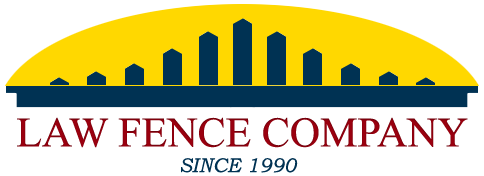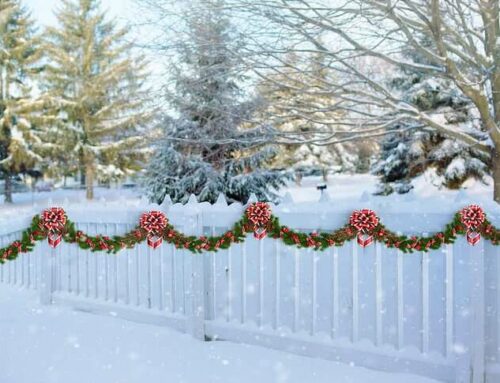Wood fences have long been a popular choice for homeowners in Colorado Springs. Understanding the characteristics and exposure of different wood types is crucial. That’s where our expertise comes in. Whether you prioritize privacy, durability, or aesthetic appeal, knowing the pros and cons of various wood options will help you make an informed decision. So, if you want to build a fence that perfectly suits your property and withstands the Colorado Springs climate, keep reading.
Understanding Wood Fencing in Colorado Springs
Wood fencing is a highly favored option in Colorado Springs, valued for its versatility, privacy, security, and ability to elevate homes’ curb appeal. The choice of wood is significant due to the local climate’s challenges, which include a wide range of temperatures from hot summers to snowy winters. These conditions can lead to wood expansion, contraction, and potentially warping or splitting if the wood is not well-maintained.
In addressing these challenges, cedar and redwood emerge as the area’s top choices for wood fencing. Thanks to inherent oils, their natural resistance to decay and insects makes them durable and less susceptible to moisture or pest damage. Additionally, ensuring proper installation, such as using pressure-treated posts and regular maintenance like sealing or staining, is crucial for extending the life of a wood fence in Colorado Springs’ unique weather conditions.
Choosing the Right Type of Wood for Your Fence
Several types of wood are commonly used. Cedar, redwood, and pine are among the top durability and aesthetic appeal choices.
-
Cedar Wood Fencing
Cedar wood is renowned for its natural beauty and durability. It contains natural oils that make it resistant to decay, rot, and insect infestation, making it an excellent fencing choice.
Pros:
- Natural resistance to weathering and pests.
- Aesthetic appeal with a distinct, pleasant aroma.
- Does not require frequent staining or sealing.
Cons:
- More expensive than some other wood types.
- May gray over time if not properly maintained.
2. Redwood Fencing
Redwood is a premium fencing material, prized for its rich color and longevity. It has a natural resistance to shrinking, warping, and decay, making it ideal for fences.
Pros:
- Exceptional durability and resistance to the elements.
- Maintains its beauty over time with minimal care.
- Naturally resistant to insects.
Cons:
- Higher cost compared to other wood types.
- Requires sealant to maintain its color.
3. Pine Wood Fencing
Pine is a popular and cost-effective option for wood fencing. Often pressure-treated to enhance durability, it’s a practical choice for many homeowners.
Pros:
- Economical and readily available.
- Pressure treatment extends its life against rot and insects.
- Accepts paint and stain well for custom looks.
Cons:
- More susceptible to warping and weathering than cedar or redwood.
- Requires more maintenance over its lifetime.
4. Spruce Wood Fencing
Spruce is an affordable wood option, often chosen for its lower cost. While it doesn’t match the durability of cedar or redwood, it’s a practical choice for temporary or budget-friendly fencing solutions.
Pros:
- More affordable than many other wood types.
- Offers a classic wood fence appearance.
- Suitable for large projects due to its cost-effectiveness.
Cons:
- Lower durability and lifespan compared to cedar or redwood.
- Requires regular maintenance and treatment to resist decay and pests.
5. Composite Wood Fencing
Composite wood, a blend of wood fibers and plastic, offers the aesthetic of wood with increased durability and less maintenance. It’s an eco-friendly option that stands up well to various weather conditions.
Pros:
- Low maintenance and high durability.
- Resistant to rot, decay, and insect damage.
- Eco-friendly, often made from recycled materials.
Cons:
- Higher initial cost compared to natural wood.
- May not have the natural look and feel of traditional wood.
6. Bamboo Fencing
Bamboo is a unique and sustainable fencing material. It provides an exotic, natural look and is gaining popularity for its eco-friendliness and distinct style.
Pros:
- Highly sustainable and environmentally friendly.
- Offers a unique and exotic aesthetic.
- Generally more affordable than premium woods like redwood.
Cons:
- May require more maintenance in harsh climates.
- Less durable compared to traditional wood options.
Summary
| Wood Type | Pros | Cons |
| Cedar | Natural resistance to weathering and pests; Aesthetic appeal with a distinct, pleasant aroma; Does not require frequent staining or sealing | More expensive than some other wood types; May gray over time if not properly maintained |
| Redwood | Exceptional durability and resistance to the elements; Maintains its beauty over time with minimal care; Naturally resistant to insects | Higher cost compared to other wood types; Requires sealant to maintain its color |
| Pine | Economical and readily available; Pressure treatment extends its life against rot and insects; Accepts paint and stain well for custom looks | More susceptible to warping and weathering than cedar or redwood; Requires more maintenance over its lifetime |
| Spruce | More affordable than many other wood types; Offers a classic wood fence appearance; Suitable for large projects due to its cost-effectiveness | Lower durability and lifespan compared to cedar or redwood; Requires regular maintenance and treatment to resist decay and pests |
| Composite Wood | Low maintenance and high durability; Resistant to rot, decay, and insect damage; Eco-friendly, often made from recycled materials | Higher initial cost compared to natural wood; May not have the natural look and feel of traditional wood |
| Bamboo | Highly sustainable and environmentally friendly; Offers a unique and exotic aesthetic; Generally more affordable than premium woods like redwood | May require more maintenance in harsh climates is less durable compared to traditional wood options |
Factors Influencing Wood Selection for Colorado Springs Fences
When selecting the right wood for your fence in Colorado Springs, several key factors must be considered to ensure durability, aesthetic appeal, and compliance with local regulations. These factors include cost, availability, personal preferences, climate resilience, exposure to UV rays and wind, snowfall and moisture resistance, and adherence to local building codes.
- Cost and Availability: The budget plays a crucial role in choosing wood. Some woods are more expensive but offer better durability and aesthetic appeal. Additionally, the availability of certain wood types in Colorado Springs may influence your choice.
- Personal Preferences: Your desired appearance and the level of maintenance you’re willing to undertake are essential. Woods like cedar and redwood offer natural beauty with less maintenance, whereas others like pine are more budget-friendly but require more upkeep.
- Climate Resilience: Colorado Springs’ dry climate with temperature fluctuations demands wood that can withstand these changes without warping or deteriorating. This makes choosing woods with natural resistance to these conditions crucial.
- UV Rays and Wind Exposure: The intense sunlight in Colorado Springs can fade wood colors over time, and strong winds can stress the fence. Selecting wood that is treated or naturally resistant to UV rays and is sturdy enough to withstand wind is essential.
- Snowfall and Moisture Resistance: Although heavy snowfall is less common, the wood should still be capable of handling occasional snowstorms and resist moisture to prevent decay.
- Local Building Codes: Compliance with local building codes is mandatory to ensure safety and avoid legal issues. These codes may influence the type of wood and construction methods used.
By carefully considering these factors, you can choose the best wood for your fence in Colorado Springs, balancing cost, appearance, and practicality while ensuring a durable, long-lasting, and compliant fencing solution.
Maintenance and Durability of Wood Fences in Varied Climates
The Importance of Regular Maintenance
Maintaining the longevity of wood fences is crucial, no matter the climate. Key to this is the regular application of stain or sealant. These treatments are essential in protecting the wood from weather elements such as rain, snow, and harmful UV rays.
Conducting Regular Inspections
Another critical maintenance step is the periodic inspection of your wood fence. Early detection and prompt repair of any issues are vital. Moisture, in particular, is a formidable enemy, often leading to rotting or warping. Regular inspections help in the early identification and resolution of moisture-related damages.
Understanding Wood-Specific Requirements
Different wood types come with their own maintenance needs and durability levels. Cedar and redwood, for instance, are naturally resistant to decay and pests, making them ideal for Colorado Springs’ climate. These woods typically demand less frequent maintenance.
Caring for Less Resistant Woods
Woods like pine and spruce may need more attention due to their lower natural resistance. However, these woods can also provide longevity with diligent maintenance, including periodic staining or sealing.
Expert Recommendations for Wood Fencing Materials
Experts recommend cedar and redwood for fencing in Colorado Springs, attributing their preference to these woods’ natural resistance to decay and insects and their durability in withstanding harsh local weather conditions.
Alternatively, pine can be treated with preservatives to enhance its durability, making it another viable option for fencing materials in the area, as this treatment helps to protect the wood against rot and insect damage, rendering it more suitable for outdoor use.
However, consulting with local professionals with experience with Colorado Springs wood fencing materials is crucial. They offer valuable insights regarding the best wood options to meet specific requirements like budget, aesthetic preferences, and maintenance needs.
This professional guidance ensures homeowners make an informed decision in selecting a wood material that not only enhances the appearance of their property but is also resilient enough to endure the climatic challenges of Colorado Springs.
Conclusion
Remember, it’s not just about picking the suitable wood; it’s also about proper maintenance and care. Regularly inspecting and treating your fence will ensure its durability and longevity. So don’t neglect this crucial aspect.
Whether you’re aiming for a classic cedar fence or considering the eco-friendly option of composite materials, take the time to weigh your options and find the perfect fit for your needs. Your fence will not only enhance the beauty and privacy of your property but also withstand the test of time.
Law Fence is dedicated to delivering exceptional fencing services in Colorado Springs that cater to each homeowner’s unique needs. We pride ourselves on providing durable, beautiful wood fencing options tailored to your preferences and requirements. Take the next step in enhancing your property – reach out to Law Fence today and let us help you build the perfect fence for your home.




